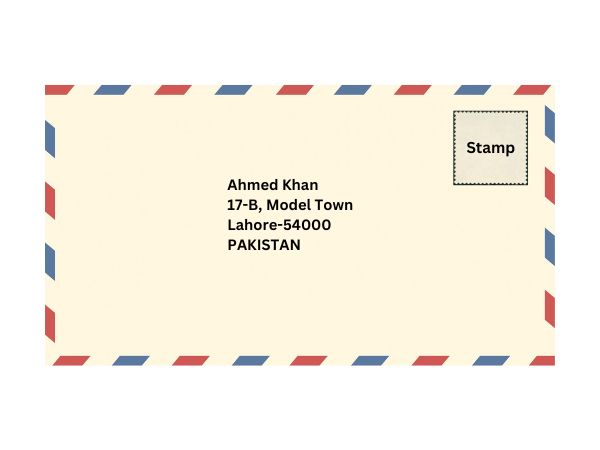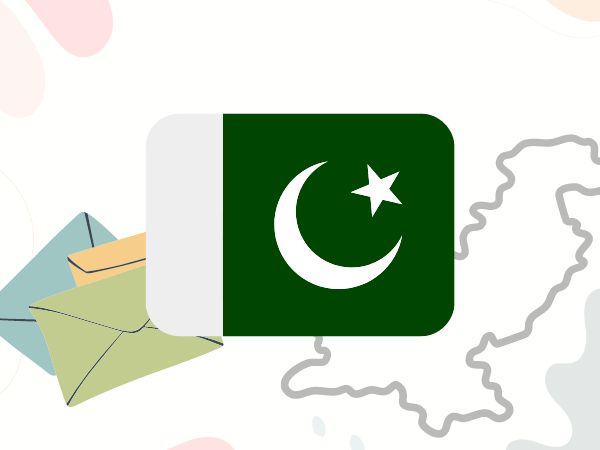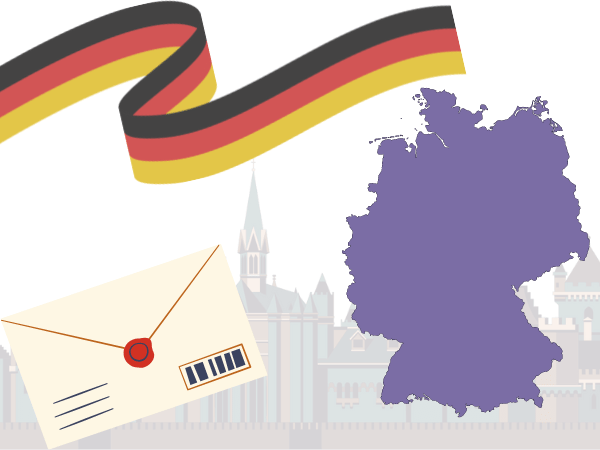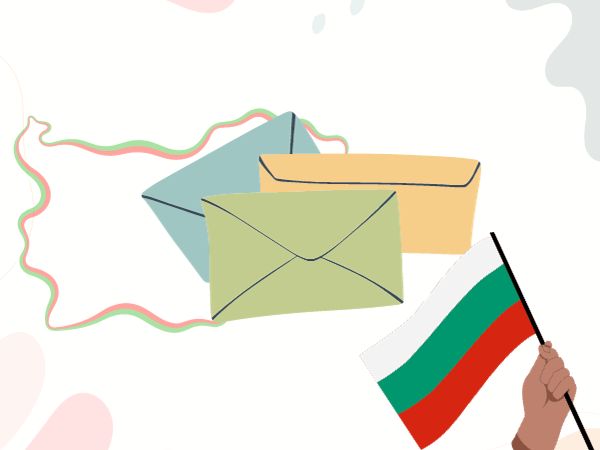Sending a letter to Pakistan can feel overwhelming when you’re unsure about the right address format and other crucial details like postal codes and local nuances. If you don’t write the correct details, your letter might get misdelivered, lost, or might not even clear customs.
In this article, we will guide you all about the proper address format, its alignment on the envelope, postal codes, and the other details when sending a letter to Pakistan.
If you’re looking for the quickest and easiest way to send a real letter to Pakistan, let us do the heavy lifting. With e-Snail, you can send a physical letter to anywhere in the world.
Pakistan Address Format
When writing a letter to Pakistan, you must follow the correct format so your letter reaches its destination without hindrance. Read on to learn how you must align the address on the envelope, and some general guidelines for the letter.
General Guidelines for the Pakistan Address Format
Be aware of the following points when writing the address on the envelope to be sent to Pakistan:
- Use clear and readable handwriting or printing.
- Avoid using punctuation marks in the address.
- Maintain consistent spacing between address components.
- Double-check the address details for any errors or omissions.
- Include appropriate titles and designations if applicable.
- Use commonly accepted abbreviations for streets, avenues, etc.
- Familiarise yourself with the correct province abbreviations.
- Adhere to any additional guidelines or requirements specified by the postal service.
- Make sure to write the country name in all capital letters.
When formatting the address for a letter to Pakistan, the following components should be included:
- Recipient’s name: Include the full name or the appropriate title, such as Mr., Mrs., or Dr., where applicable.
- House/building number and street name: Provide the specific number and name of the building or house where the recipient resides.
- City/locality name: Mention the name of the city or locality where the recipient is located.
- Province abbreviation: You may or may not include the province with its correct abbreviation in the address. It improves the address format but is not necessary.
- Postal code: Write the five-digit postal code that corresponds to the recipient’s area.
- Country name: Write in all capital letters at the end.
These components collectively form the address and should be accurately included in the proper order to ensure successful delivery.
You can take this as an example of the correct address format:
Recipient’s Name: Ahmed Khan
House/Building Number and Street Name: 17-B, Model Town
City/Locality Name: Lahore
Postal Code: 54000
Country: Pakistan
So, it would be written as:
Ahmed Khan
17-B, Model Town
Lahore-54000
PAKISTAN
Pakistan Address Alignment
The recipient’s address should be written on the front side of the envelope, aligned in the centre.
As for the sender’s address, it should be written on the top left corner of the envelope or the back flap. Begin with the sender’s name on the top line, followed by the complete address, including the house/building number, street name, town/city name, postal code, and country. You can also write the sender’s details on the bottom-left corner of the backside.
Pakistan Postal Code Format
In Pakistan, the postal code format consists of a five-digit numerical code that helps to identify specific areas or regions within a city or locality. The postal code is an essential component of the address and plays a vital role in accurate mail sorting.
The five-digit postal code in Pakistan is typically written to the right of the city or locality name, separated by a dash. For example, if the postal code is 54000 and the city is Lahore, the address format would be:
Lahore-54000
The postal code provides more precise information about the recipient’s location, allowing postal workers to efficiently sort and route the mail to the correct area. It helps to streamline the delivery process, reducing the chances of misdelivery or delays.
Abbreviations and Titles
When sending a letter to Pakistan, there are abbreviations and titles to be aware of. A lot of them can are similar to other abbreviations and titles used worldwide, but some are also unique to Pakistan.
Abbreviations:
- Rd: Road
- St: Street
- Ave: Avenue
- P.O.: Post Office
- Pk: Park
- Masjid: Mosque
- Cantt: Cantonment
- No.: Number
- Apt: Apartment
- Flr: Floor
Titles:
- Mr: for a male recipient
- Mrs: for a married female recipient
- Ms: for an unmarried female recipient
- Dr: for a recipient with a doctorate degree
- Prof: for a recipient with a professorial title
Restricted and Prohibited Items in Mail
It’s essential to be aware of the restricted and prohibited items to avoid any issues or violations. Here are some examples of items that are generally restricted or prohibited in international mail:
Restricted Items:
- Currency and monetary instruments
- Jewelry, precious metals, and gemstones
- Perishable items
- Prescription medications
- Firearms and ammunition
- Liquids, gels, and aerosols
- Live animals
Prohibited Items:
- Explosives, fireworks, and flammable materials
- Narcotics and illegal drugs
- Offensive or indecent materials
- Counterfeit goods and unauthorized replicas
- Hazardous chemicals and substances
- Biological materials
- Wildlife products protected by international regulations
Always consult the official guidelines of the postal service or customs authorities in both the originating and destination countries to ensure compliance with specific restrictions and prohibitions.
Language and Cultural Considerations
When sending a letter to Pakistan, it is essential to consider language and cultural factors to ensure effective communication. While English is widely understood and used for official and business communication in Pakistan, it’s important to know the recipient’s language preference.
If you are aware of their preferred language, you can consider using Urdu, the national language of Pakistan, or any other regional language they are comfortable with. However, if you are not confident in your language skills, it is advisable to stick to English to avoid potential miscommunication.
For greetings, start your letter with a formal salutation. Also, consider using the appropriate titles. It is recommended to maintain a professional and polite tone, avoiding overly casual or informal language.
Showing sensitivity to cultural and religious practices is crucial. Also, be aware of significant dates for religious observances or national holidays when discussing event invitations or scheduling.
In closing your letter, use a polite and formal closing phrase such as “Yours sincerely” or “Best regards,” followed by your name and any relevant titles or affiliations.
Conclusion
If the above information is considered, you should have no issues when it comes to sending post to Pakistan.
Don’t forget, you can also use e-Snail to easily send a letter online to anywhere in the world, including Pakistan.




